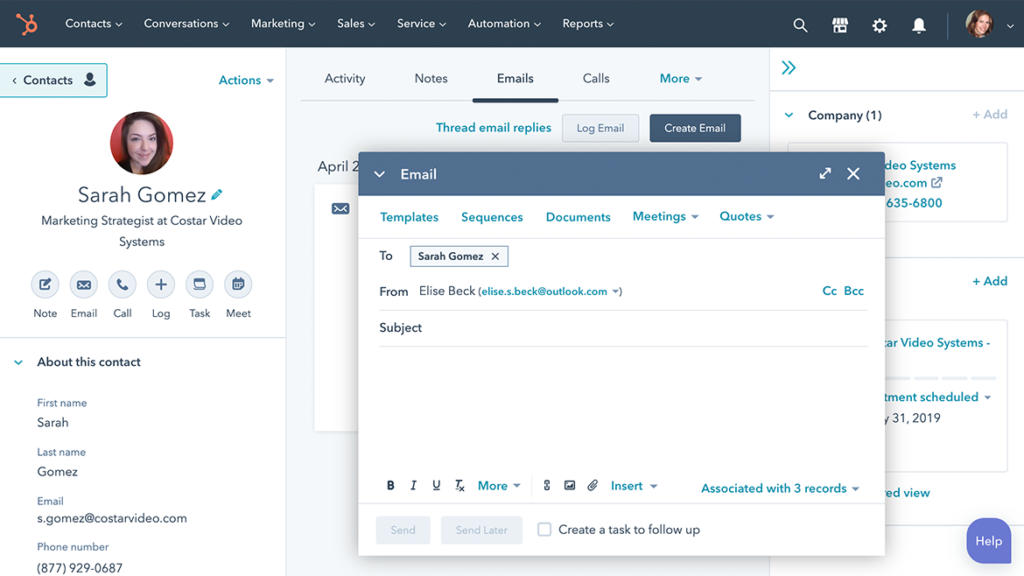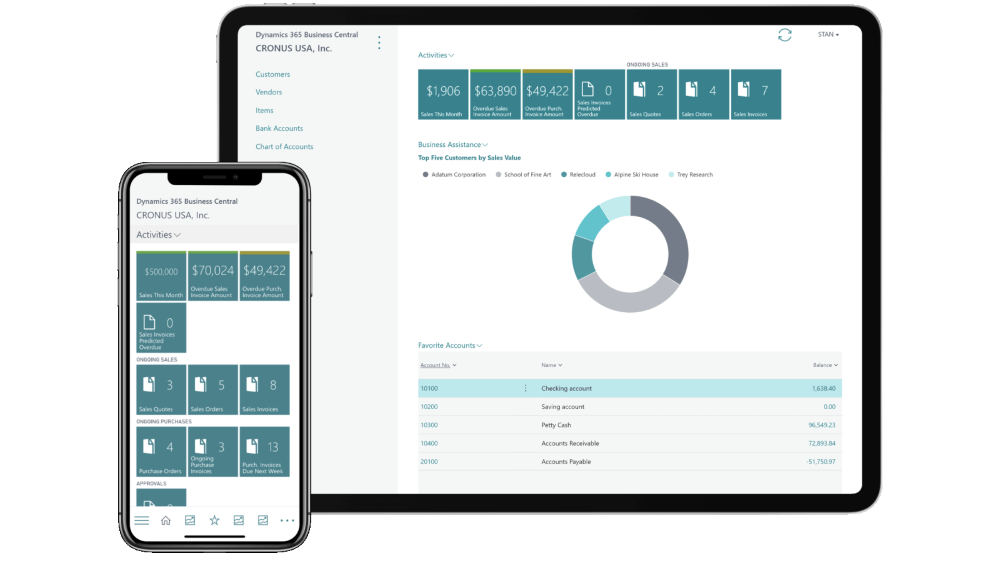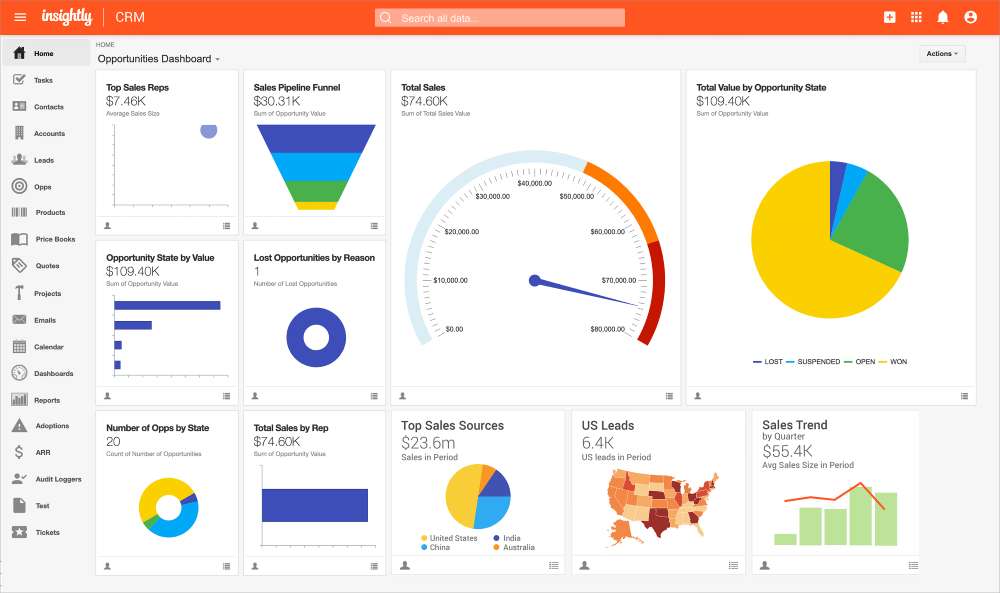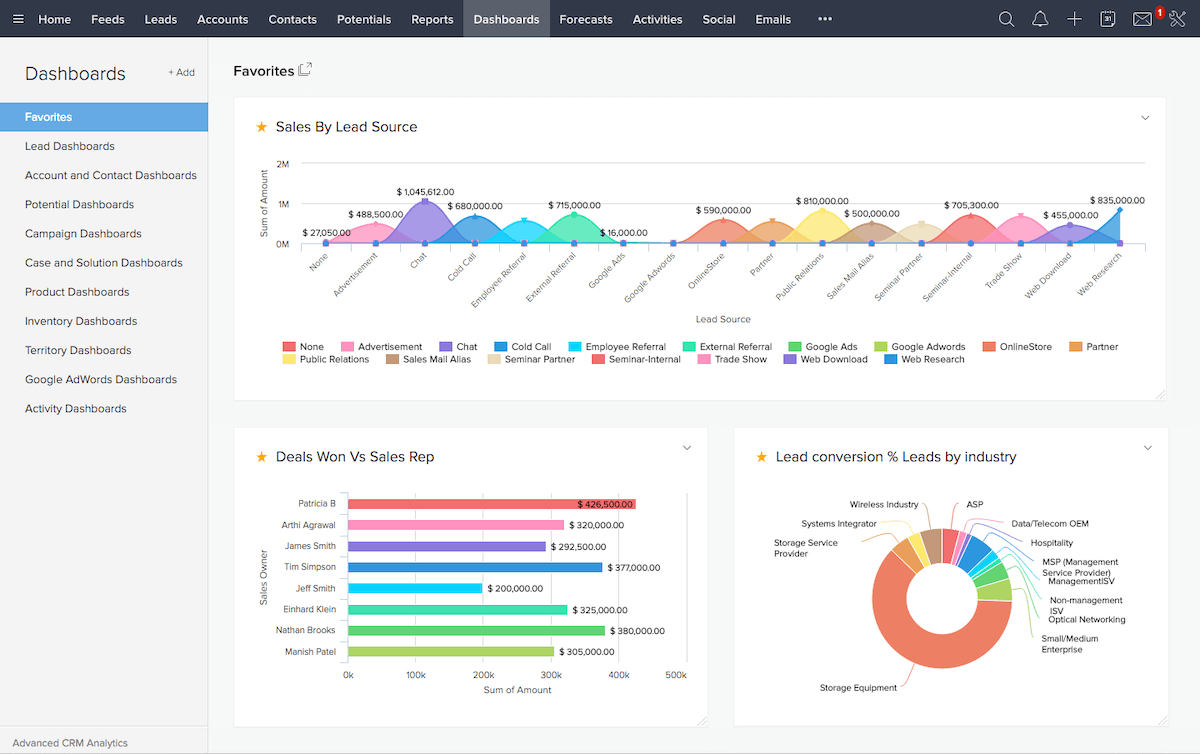In an era where customer relationships can make or break a business, a CRM software Outlook integration is essential.
This blog post provides an informative guide to the top CRM software options with a seamless Outlook integration.
You’ll gain insights into:
- The unique features of each software.
- Their limitations.
- The pricing structure.
As you explore the curated list of CRM software, consider which features align best with your business needs.
Let’s dive in!
What is CRM software?
CRM software, or customer relationship management software, is a platform that helps you manage customer interactions.
It provides tools for tracking:
- Sales.
- Marketing.
- Customer service.
- Other regular operations.
CRM systems are an indispensable tool, as they let you store and access information about:
- Contacts.
- Leads.
- Deals.
- Sales pipelines.
Defining Outlook integration and its role
Outlook, a Microsoft product, is one of the most widely used email platforms. Outlook integration refers to functionality where CRM software synchronizes with Outlook in real-time.
This means that you can directly import emails, contacts, and meetings from Outlook into your CRM system and vice versa.
These integrations are crucial to centralizing all your data, making it easier for your sales teams and customer service representatives to access vital information.
Benefits of integrating Outlook with CRM software
Here are some ways your business benefits from Outlook integration with a CRM.
Communication efficiency: The immediate benefit
Integrating your CRM with Outlook enhances efficiency of communication. For example, with all your customer information and history in one place, email tracking becomes straightforward.
Also, it lets your sales and marketing teams easily follow up on opportunities and leads directly from their Outlook inbox. As a result, they can send personalized and timely responses to customers.
Fostering improved team collaboration
A CRM facilitates improved team collaboration by letting teams share:
- Contacts.
- Emails.
- Calendar events.
The ability to collaborate ensures that everyone is on the same page. As a result, you boost efficiency and avoid duplicate efforts.
Elevating customer satisfaction levels
You can address customer queries promptly when your CRM is integrated with Outlook. This boosts customer satisfaction levels, as representatives have all the necessary information at their fingertips.
Enhanced business analytics: A silent benefit
A CRM software Outlook integration provides enhanced business analytics. It gives you in-depth insights into customer:
- Interactions.
- Behavior.
- Preferences.
With this information, you can make better decisions and tailor your marketing strategies to stay responsive to customer needs.
Improving automation and data synchronization
A CRM software Outlook integration improves automation and data synchronization. You can automate routine tasks like data entry to reduce manual work and errors.
What’s more, real-time data sync ensures that any change made in one platform instantly reflects in the other, ensuring data consistency across the board.
Why your business needs a CRM for Outlook
A good CRM streamlines operations through Outlook integration.
It also ensures that businesses stay ahead of their competition, as it:
- Offers superior customer service.
- Ensures efficient sales management.
- Assists in managing customer relationships.
Identifying a top CRM solution
A top CRM software solution offers various capabilities, from email marketing to lead generation. When choosing a CRM, it’s crucial to consider these factors:
- Pricing.
- Features.
- Interface.
- Number of integrations.
The step-by-step process to integrating Outlook with your CRM system
Step 1: Choosing a reliable platform for integration
There are numerous CRM platforms on the market. Some popular companies include Method, Zoho CRM, and Salesforce.
When choosing among your various CRM options, it’s vital to assess if they include what your business needs.
Your CRM requires a reliable platform for the integration that is compatible with Outlook. Additionally, look for a solution that connects seamlessly with your existing software and apps.
Your best bet is a CRM that offers a trial version for users to test the platform before committing. This way, you can rest assured that you’re getting a reliable platform that meets your needs — all without spending a dime.
Step 2: Configuring your settings in the CRM system
Once you’ve chosen a CRM platform, it needs to be configured for Outlook. This involves activities like:
- Creating templates for emails.
- Setting up sequences for automated follow-ups.
- Deciding on a plan that best suits your needs.
Some CRM systems let you install add-ons that enhance implementation. For example, Salesforce includes an add-on that is part of the integration process with Outlook.
Step 3: Connecting the systems: API or custom code?
Each CRM system has a unique integration method. One might offer a direct web or mobile app integration with Outlook, while another connects systems via an API or custom code.
It’s essential to understand how your business platforms connect. For instance, Zoho CRM provides a direct API that connects with Outlook to make the process more straightforward.
Step 4: Setting up contact synchronization across platforms
One of the biggest benefits of a CRM software Outlook integration is that it sets up contact synchronization across both platforms.
As a result, any account or contact that you add to one platform automatically updates in the other. This ensures that your teams always have the most accurate contact information.
For your relationships and sales, up-to-date contact information is crucial because it paves space for:
- Personalized interactions.
- Timely follow-ups.
- Payment consistency.
Step 5: Monitoring the performance of your integration
Once your integration is complete, it’s essential to monitor its performance.
This involves:
- Checking if Outlook emails are syncing correctly with your CRM.
- Ensuring that calendar events update in real time.
- Verifying that there are no issues with data transfer.
It’s also helpful to invest in a tool that monitors the performance of your integration and pinpoints inefficiencies so that you know how to optimize it. Other tools in the Microsoft Office suite are a great way to accomplish this.
Step 6: Troubleshooting: Handling setup issues
Even the best CRM in the world comes with its challenges. There might be instances where specific data doesn’t sync. Or, maybe the desktop versions of your CRM doesn’t integrate well with the online version of Outlook.
In cases like these, it’s crucial to have a reliable support system in place. In addition to online forums and training resources, ensure your CRM provider has a reliable support team that troubleshoots any issues that arise during setup.
Evaluating the top CRMs integrating with Outlook
Method CRM
Method is a top CRM solution integrated with Outlook. Its automatic, two-way sync with QuickBooks and Xero makes it the #1 system for users of those accounting software.
Changes you make in one platform instantly reflect in the other, meaning you don’t have to worry about double data entry.
Method also allows for advanced automation and a completely customizable experience.
Features
- Real-time synchronization of contacts, emails, and calendar events.
- The ability to customize your entire solution down to your logo.
- Reusable report, transaction, and email templates.
- Drag-and-drop automation of your business workflows, including invoicing and lead generation.
- Several third-party integrations, such as Gmail, Zapier, and Outlook.
- Customization team that helps you implement and tailor your software to your needs.
Limitations
- Method is currently only available in English.
- Best suited for QuickBooks and Xero users.
Pricing
The following three pricing plans are available:
- Contact Management: $25 per user per month.
- CRM Pro: $44 per user per month.
- CRM Enterprise: $74 per user per month.
Method also offers a free trial with no credit card or contract required.
HubSpot CRM

Image credit: HubSpot
HubSpot is one of the best tools when it comes to a CRM software Outlook integration. It’s broken down into different hubs, including marketing, sales, service, and more. You can pick and choose from these hubs to create a platform that only has the tools you need.
Features
- Email marketing features like tracking and scheduling, plus pre-made email templates.
- Process centralization that increases productivity via integration with Microsoft Outlook.
- Powerful sales dashboard that optimizes sales and revenue generation.
- Automated workflow that nurtures leads and fosters customer loyalty.
Limitations
- Integration with other tools often requires investment in HubSpot’s ecosystem.
- Advanced features require a premium plan subscription.
Pricing
HubSpot sells its software by hub or in bundles. Your price depends on how many hubs you need.
There’s no real trial, but HubSpot offers a free version of its CRM software. The Starter CRM Suite costs $50 monthly or a discounted $540 annually. It includes their marketing, sales, and service hubs with two paid users.
Microsoft Dynamics 365

Image credit: Microsoft
Microsoft Dynamics 365 also stands out as a top CRM software Outlook integration tool. It offers a comprehensive suite of features to enhance customer relationship management.
Features
- Deep integration with Microsoft Office suite products, including Microsoft Outlook.
- AI-driven insights and analytics.
- Centralized view of your customer data.
- Modular approach that lets you choose the specific apps you need.
Limitations
- Complex for small businesses.
- The cost for the full suite of tools is high.
Pricing
The pricing for Microsoft Dynamics 365 depends on the modules and apps you choose. You can view the full list of modules and their prices on the company’s website.
Insightly

Image credit: Insightly
Next on our list is Insightly. It’s a fully-customizable CRM with features that help you reach your revenue goals.
Features
- Ability to associate single contacts with multiple opportunities.
- Contact and project management in one platform.
- Task and event tracking.
- Customizable dashboards and reports.
Limitations
- There is noticeable lag time when editing accounts.
- Users report connectivity issues with this CRM software Outlook integration.
Pricing
Insightky offers the following pricing options:
- Plus: $29 per user per month.
- Professional: $49 per user per month.
- Enterprise: $99 per user per month.
Zoho’s CRM Solution

Image credit: Zoho
Zoho offers another strong CRM software Outlook integration that emphasizes business workflow automation and efficiency. Users of other Zoho products like it for its seamless integration with the entire software suite.
Features
- ZIA — an AI-powered sales assistant.
- Multichannel communication, including email, phone, and live chat.
- Third-party integrations with Slack, Shopify, and more.
- Reliable customer support and training resources.
Limitations
- Customization has a steep learning curve.
- Lacks customer support in some areas.
- Basic workflow automation features.
Pricing
Zoho CRM offers the following pricing plans:
- Standard: $20 per user per month.
- Professional: $35 per user per month.
- Enterprise: $50 per user per month.
- Ultimate: $65 per user per month.
Key takeaways
With a CRM software Outlook integration, managing your customer interactions becomes effortless. It centralizes data for sales and customer service teams to access vital information quickly.
Choosing the right CRM involves considering factors like pricing, features, and limitations. Method is a popular choice among many businesses because of its robust, two-way sync with QuickBooks and Xero.
An integrated system means that you don’t need to constantly jump back and forth between windows — so no information gets lost.
CRM software Outlook integration FAQs
What CRM software offers the best integration with Outlook?
Several software options offer seamless integrations with Outlook. The right software for you depends on your business needs.
For example, Method CRM offers a powerful, two-way sync with QuickBooks and Xero to reduce double data entry and manual work. It also offers several third-party integrations along with Outlook, including Gmail, Zapier, and Mailchimp.
Can integrating CRM software with Outlook improve customer relationships?
Yes, integrating CRM software with Outlook enhances your customer relationships. It creates more efficient interactions, as it:
- Simplifies communication workflows.
- Ensures timely follow-ups.
- Centralizes customer data.
How can I monitor the performance of my CRM and Outlook integration?
Many CRM platforms provide built-in analytics and reporting tools. By regularly checking them, you can monitor the data accuracy and the integration’s performance. This ensures seamless operations.
Save hard costs and real time with a free trial of Method.
Image credit: kucherav via Adobe Stock






